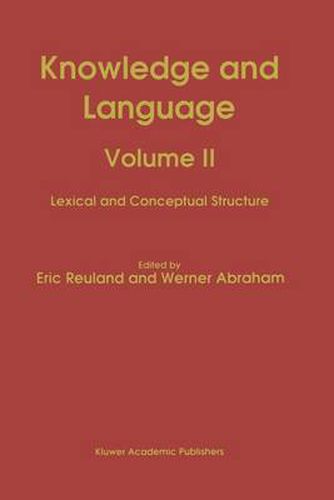Readings Newsletter
Become a Readings Member to make your shopping experience even easier.
Sign in or sign up for free!
You’re not far away from qualifying for FREE standard shipping within Australia
You’ve qualified for FREE standard shipping within Australia
The cart is loading…






Lexical and Conceptual Structure addresses the nature of the interface between conceptual and linguistic structure. It is a long-standing observation that there is a correspondence between formal linguistic and notional categories, which is incomplete, yet real. Presumably every language will contain a formal category which at least contains the expressions denoting prototypical objects, another containing the expressions which denote prototypical actions, and so on. If formal linguistic categories have images at some level of cognitive structure, the question arises what the nature of this level is: What are its elements and how do they combine? What is the relation between cognitive structure and the domain of interpretation? Finding the answer to questions of this type is of the utmost importance in order to understand how the language faculty relates to the other cognitive abilities. One of the important challenges facing us is to find a substantive theory of the relation between meanings as linguistic entities and real-world entities. This book attempts to provide such a theoretical framework.
$9.00 standard shipping within Australia
FREE standard shipping within Australia for orders over $100.00
Express & International shipping calculated at checkout
Lexical and Conceptual Structure addresses the nature of the interface between conceptual and linguistic structure. It is a long-standing observation that there is a correspondence between formal linguistic and notional categories, which is incomplete, yet real. Presumably every language will contain a formal category which at least contains the expressions denoting prototypical objects, another containing the expressions which denote prototypical actions, and so on. If formal linguistic categories have images at some level of cognitive structure, the question arises what the nature of this level is: What are its elements and how do they combine? What is the relation between cognitive structure and the domain of interpretation? Finding the answer to questions of this type is of the utmost importance in order to understand how the language faculty relates to the other cognitive abilities. One of the important challenges facing us is to find a substantive theory of the relation between meanings as linguistic entities and real-world entities. This book attempts to provide such a theoretical framework.